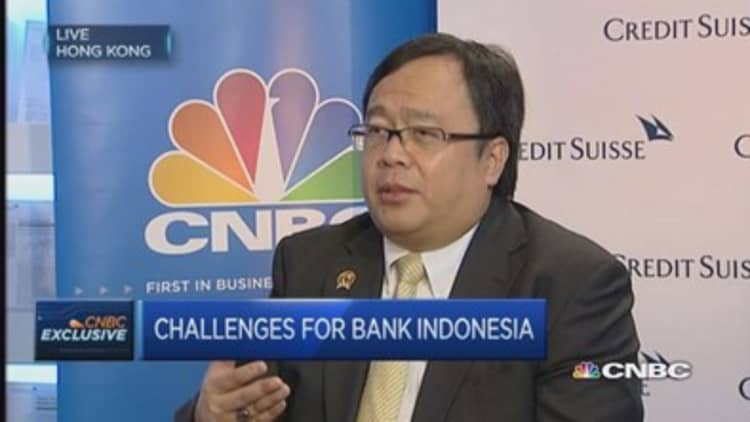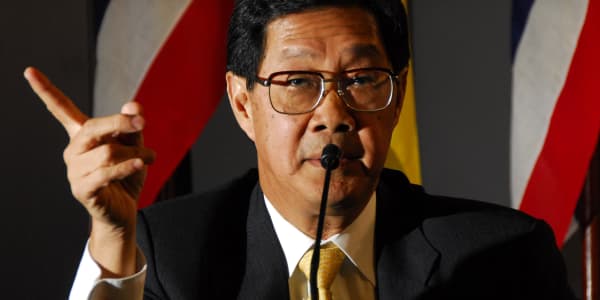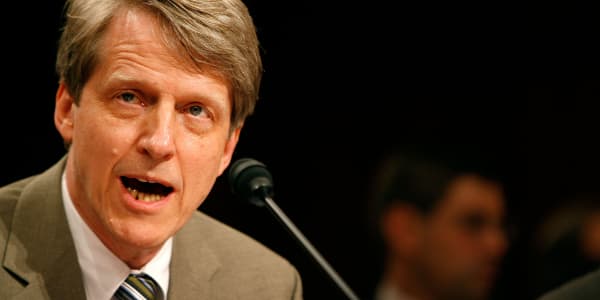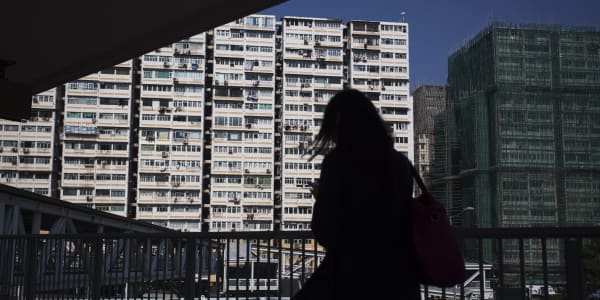Indonesia's rupiah has tumbled to 17-year lows, but the central bank is prepared to draw the line on just how much further it can fall.
"If Indonesia's inflation this year is 4-4.5 percent, and then U.S. inflation is at 1.5 percent, meaning depreciation is around 3-3.5 percent, it is tolerable for Indonesia,"Mirza Adityaswara, senior deputy governor of Bank Indonesia – the country's central bank – said Monday at the Credit Suisse Asian Investment Conference.
"Depreciation above that level, we think is not tolerable, but if that's only temporary because of the current market jittery because of the [Federal Open Market Committee] meeting, in April and June, that's still acceptable for us," he added. "But beyond that level we think is not acceptable."

The U.S. dollar is fetching around 13,014 rupiah late Monday, a far cry from the around 9,700 rupiah level in mid-2013, when the Indonesian currency was hard-hit after then Federal Reserve chief Ben Bernanke first broached that the U.S. central bank would begin tapering its asset purchases, a task it completed in 2014. That sparked a selloff across emerging markets, with funds flowing out of Indonesia in part because of concerns about its ability to fund its current account deficit.
Small market
To be sure, Adityaswara noted that Bank Indonesia often steps in to smooth trading in the rupiah.
"Indonesia's forex market is not a big market," he said, estimating trade in the currency at around $3 billion to $5 billion a day, including corporate demand. He noted that neighboring Thailand and Malaysia see around $10 billion to $15 billion in foreign exchange a day. "We are in the market to give supply and then to reduce volatility."
Don't misinterpret
One of his concerns is that the market may be misreading Bank Indonesia's decision to cut interest rates in mid-February, a step that took markets by surprise. Some market watchers had interpreted the move as another brick in the wall of easing steps across the globe.
"Our policy stance is still on the tight bias," Adityaswara said. "When we cut interest rates in February, it was just because when we increased interest rates in November, at that time, we didn't know that the government was going to implement the energy reform."
Read MoreBank Indonesia to soothe investors' nerves
In November, the government announced it would raise subsidized gasoline and diesel prices by more than 30 percent, presenting a clear inflation risk. Adityaswara cited concerns inflation could rise as much as 200 basis points above the 4.7 percent level at the time. But after the government introduced measures to ensure the poor wouldn't see electricity prices rise, that significantly changed the inflation outlook to around 4-4.5 percent, he said.
"That's why we cut in February but that doesn't mean a beginning of an easing cycle because we still have a current account deficit situation," he said.
Eye on the Fed
In addition, there are several Federal Reserve meetings ahead.
"What we notice every time there is an FOMC meeting -- for example in December and in March – [the market gets jittery], so we don't want to send the wrong signal to the markets that Indonesia will start easing," he said.





